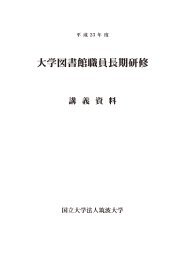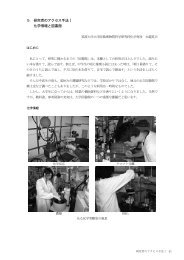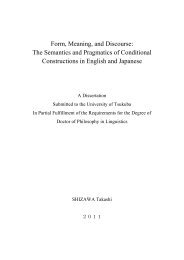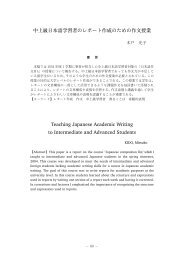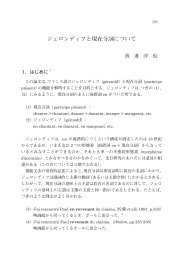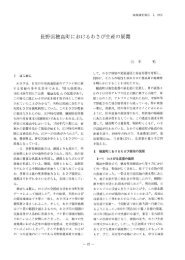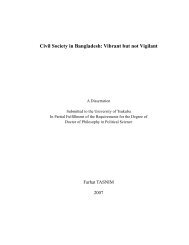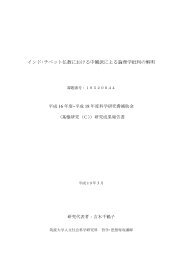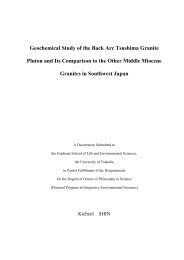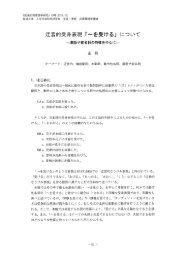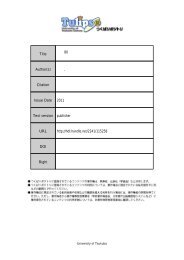TQM Model of Elements-Deployment Table Developed from Quality ...
TQM Model of Elements-Deployment Table Developed from Quality ...
TQM Model of Elements-Deployment Table Developed from Quality ...
You also want an ePaper? Increase the reach of your titles
YUMPU automatically turns print PDFs into web optimized ePapers that Google loves.
③ Proceed to organize <strong>TQM</strong> promotion and implementing organization<br />
according to the constitution.<br />
④Use their support <strong>of</strong> parents company and cooperation association, etc.<br />
(J) Group management and GWQM <strong>of</strong> Toyota group<br />
The KEIRETSU <strong>of</strong> Toyota group has long historical tradition. When Motomachi<br />
factory complete on 1959, concentration <strong>of</strong> the quality and amount stable supplying<br />
parts supplier was demanded around the factory in order to keep reduction <strong>of</strong><br />
inventories effects by JIT it was promoted before. And then the Technical Guidance<br />
Policy for Special subcontracting factory under “Autoparts Control Bylaw” declared by<br />
Mr. Kiitiro Toyoda on February 1940 was similar to “Instruction <strong>of</strong> Improvement <strong>of</strong><br />
Management and Technology, Financial Support for subcontracting factory” in<br />
“Subcontractor Certification System” <strong>of</strong> the Commerce and Industry Ministry in 1941,<br />
and this idea was considered the policy <strong>of</strong> Level Up <strong>of</strong> an affiliated factory to be raised<br />
the level until JIT is enabled and was effective (Negishi [23]). In addition to their policy,<br />
TQC introduction in Toyota would be effective for JIT processing on (Nemoto [18]).<br />
While being implementing JIT in Toyota, various strategy management such as<br />
M&A exercise and new age "KEIRETSU" construction were done corresponding to the<br />
change in the business environment flow (Nihon Keizai Shinbun [25], [26]). However,<br />
the Group Management concept didn't change. It becomes management philosophy <strong>of</strong><br />
Toyota, and the KEIRETSU criticism <strong>of</strong> the United States also countered for. (Nihon<br />
Keizai Shinbun [27], [28]). There is a history flowed to the basis that had made an effort<br />
to the construction <strong>of</strong> Toyota Production System (TPS) with both <strong>of</strong> Toyota and Kyoho<br />
Association (Toyota Suppliers Association) member enterprise since Motomachi factory<br />
completion, and the construction <strong>of</strong> the cross promotion <strong>of</strong> neither mutual development<br />
and nor mutual exchange through <strong>TQM</strong> are forgotten in the backing. The way <strong>of</strong><br />
GWQM program <strong>of</strong> the Toyota group is similar in the USA. On the other hand, Toyota<br />
that aims to achieve “Best Procurement in the World” is maintaining the affiliate in the<br />
meaning "Both are firmly lied with for achieving Coexistence and Co-prosperity " now.<br />
However, it can be asserted, "There is no fact <strong>of</strong> business relationship have only been<br />
with the manufacturer <strong>of</strong> affiliated company while being shared the stocks by each<br />
other".<br />
Fig. 2.4 are "Division <strong>of</strong> labor structure chart <strong>of</strong> the car production" issued by JAMA<br />
(Japan Automobile Manufacturers Association) Report in 1991 [29], and which are<br />
explained affiliated structure <strong>of</strong> Japan Car Industry is shown. According this report, “A”<br />
company was produced 30% in-house and 70% suppliers, and<br />
For in-house production: 2nd sub – contractors; 500 – 600<br />
For suppliers : 1st sub – contractors; 156<br />
: 2rd sub- contractors; 2000 – 3000<br />
For both : 3rd sub- contractors; 7000 – 10000<br />
44



